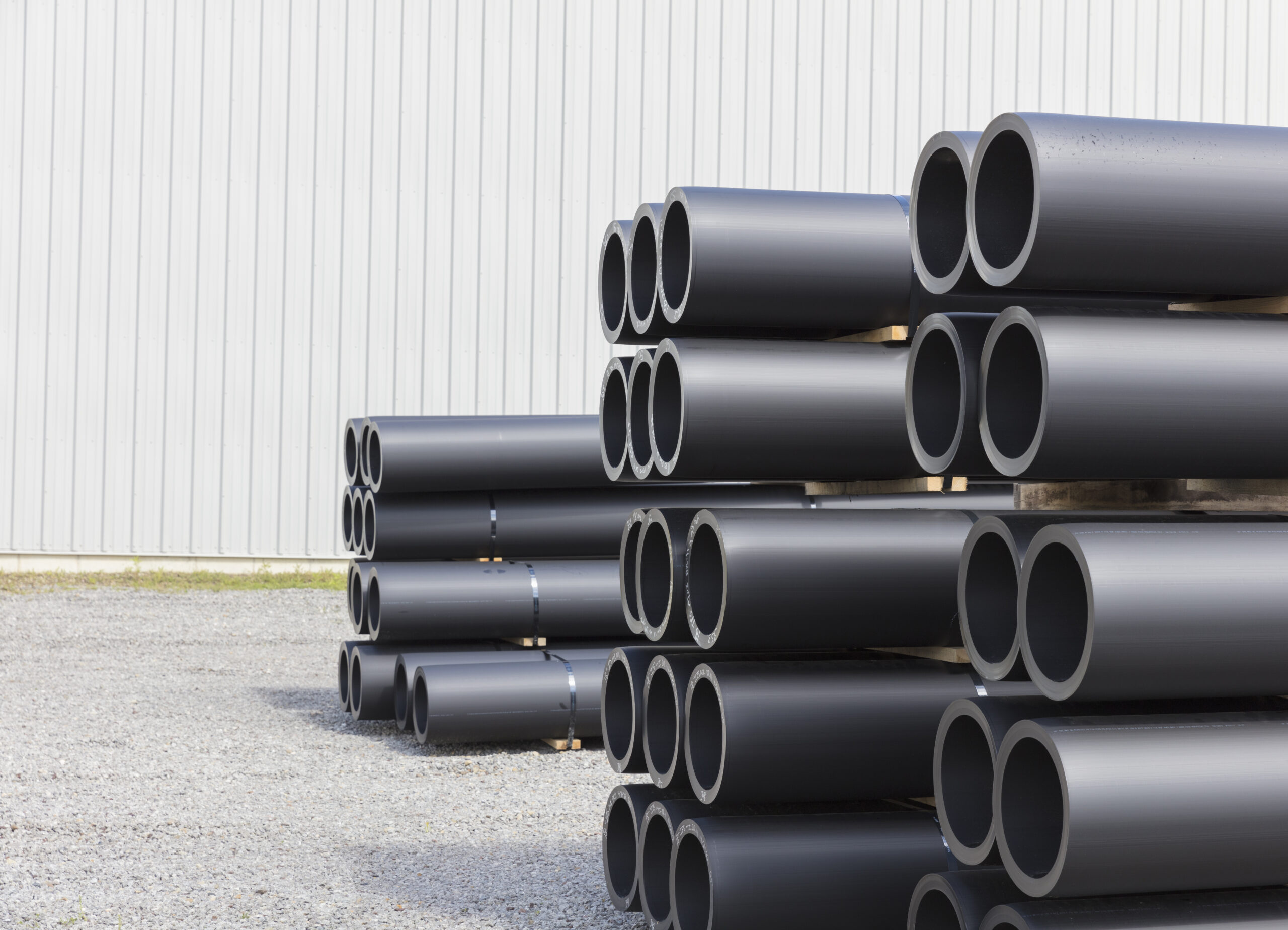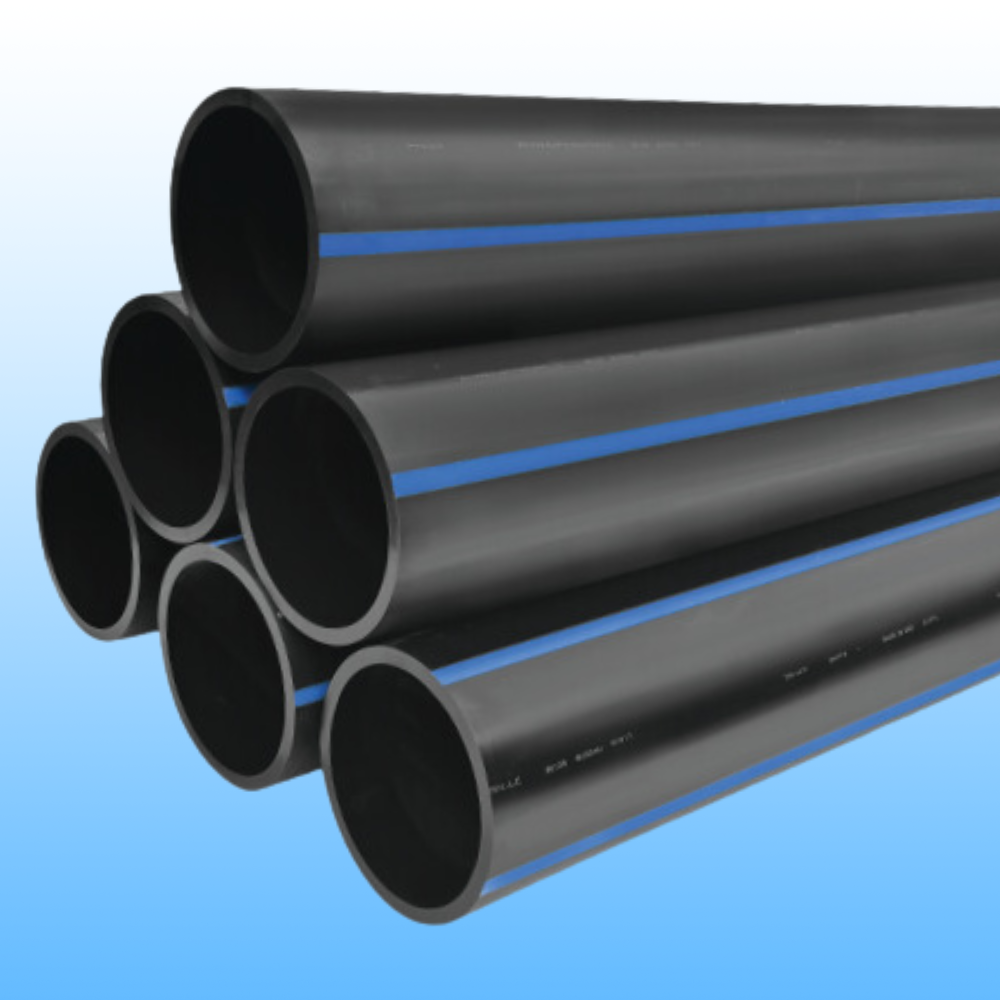How hdpe pipe suppliers Midland TX Are Enhancing Oil and Gas
Explore the Manufacturing Refine Behind High-Quality HDPE Pipeline and Its Applications
The production procedure of high-grade HDPE pipes is intricate and systematic. It begins with the option of resources that improve performance. Following this, ethylene goes through polymerization to develop resin, which is then shaped with extrusion. Quality assurance is paramount, ensuring that the last product fulfills strict criteria. However, the trip of HDPE pipelines does not finish with manufacturing. Their applications across different markets reveal a broader significance worth taking a look at.
Recognizing HDPE: Features and Advantages

High-density polyethylene (HDPE) is a functional polycarbonate recognized for its longevity and resistance to various ecological factors. This product exhibits superb tensile stamina, making it appropriate for requiring applications. Its low-density structure contributes to a lightweight item, assisting in convenience of dealing with and installation. HDPE likewise showcases amazing resistance to chemicals, which reduces destruction when subjected to severe substances.
The material's reduced moisture absorption better boosts its longevity, making it suitable for usage in pipes and storage space tanks. Furthermore, HDPE is resistant to ultraviolet (UV) radiation, making certain that products maintain their integrity even when exposed to sunlight. Its flexibility enables for the production of elaborate forms without compromising toughness. The eco-friendly nature of HDPE, typically originated from recycled products, includes to its allure, advertising lasting practices in manufacturing. Overall, these residential properties and advantages make HDPE a preferred option for different commercial and customer applications.
Raw Product Selection for HDPE Production
The selection of raw materials for HDPE manufacturing is vital to verify the end product fulfills the preferred specs and quality standards. High-density polyethylene (HDPE) is primarily generated from polymerized ethylene, originated from fossil fuels such as gas or petroleum. The top quality of these feedstocks greatly affects the mechanical and thermal residential or commercial properties of the final HDPE.
Ingredients likewise play a substantial role in enhancing HDPE's efficiency, consisting of antioxidants, UV stabilizers, and colorants, which enhance longevity and resistance to environmental elements. The selection procedure must think about not just the chemical structure of the raw materials however additionally their processing attributes to assure effective manufacturing.
Additionally, the sourcing of resources ought to focus on sustainability and compliance with environmental guidelines, as responsible methods are critical in today's market. Inevitably, careful basic material option lays the foundation for producing high-grade HDPE pipes appropriate for diverse applications.
The Extrusion Refine: Forming HDPE Pipe
The extrusion procedure plays an essential duty in forming HDPE pipelines, beginning with meticulous material preparation methods that guarantee optimal circulation and uniformity. Similarly crucial is the style of the die, which directly affects the last measurements and surface area high quality of the pipeline. Together, these factors add substantially to the performance and high quality of HDPE pipe manufacturing.
Product Prep Work Techniques
Efficient production of HDPE pipes starts with thorough product preparation techniques, particularly the extrusion process. During this stage, high-density polyethylene material is very first dried out to get rid of moisture, ensuring suitable circulation attributes. The resin is after that fed into the extruder, where it undertakes home heating and melting, changing into a viscous state. This home heating procedure is very carefully managed to maintain the product's honesty and efficiency. The molten HDPE is required with a die, forming it right into a continuous pipe kind. Proper temperature management throughout extrusion is vital, as it straight impacts the product's residential or commercial properties and the final product top quality. As soon as formed, the HDPE pipeline is cooled down and cut to defined sizes, prepared for subsequent processing and applications.
Die Layout Importance
Accuracy in die style plays an essential function in the extrusion procedure of HDPE pipes. The die works as the final shaping device, straight influencing the pipe's dimensions, wall thickness, and surface area coating. A properly designed die warranties uniform product flow, reducing issues such as abnormalities and vulnerable points. The geometry of the die need to be enhanced to accommodate the certain properties of HDPE, including its viscosity and thermal habits throughout extrusion. Furthermore, the cooling price of the material as it passes through the die can markedly influence the pipe's architectural integrity. Spending in innovative die technology is crucial for producers intending to produce top notch HDPE pipelines that fulfill industry requirements and consumer expectations.
Quality Control Actions in HDPE Manufacturing
Various elements influence the high quality of HDPE pipeline manufacturing, efficient high quality control procedures are crucial to guarantee consistency and integrity in the last product (hdpe pipe fittings Midland TX). Trick high quality control practices consist of strenuous material inspection, verifying that the raw polyethylene meets recognized standards for purity and thickness. Throughout the extrusion procedure, criteria such as temperature level, stress, and cooling time try here are very closely monitored to maintain dimensional precision and structural honesty
On top of that, post-production testing is necessary; makers usually carry out hydrostatic examinations to examine the pipe's strength and resistance to stress. Visual examinations for surface defects better enhance top quality guarantee. Certification from relevant standards organizations, like ASTM or ISO, gives an extra layer of credibility. By applying these detailed quality assurance measures, manufacturers can minimize flaws, improve efficiency, and make certain that the HDPE pipes fulfill the particular needs of various applications, eventually leading to client fulfillment and trust in the item.
Applications of HDPE Pipe Across Industries
HDPE pipes are used throughout various markets because of their longevity and versatility. In water distribution systems, they guarantee efficient delivery, while in wastewater monitoring, they provide dependable solutions for waste transport. In addition, agricultural irrigation networks gain from HDPE's resistance to deterioration and versatility, making it a suitable selection for modern farming techniques.

Water Circulation Equipments
A substantial number of industries depend on high-density polyethylene (HDPE) pipes for effective water circulation systems. Known for their longevity and resistance to rust, HDPE pipelines are widely made use of in community water supply networks, agricultural watering, and commercial applications. Their lightweight nature facilitates simple handling and setup, minimizing labor prices and time. In addition, HDPE pipes can suit various stress levels, making them appropriate for both reduced and high-pressure systems. hdpe pipe in stock Midland TX. The flexibility of the material permits seamless assimilation right into existing facilities, reducing the need for comprehensive excavation. Furthermore, HDPE's resistance to chemical leaching warranties that the water delivered remains safe and tidy, making it an ideal choice for keeping the top quality of safe and clean water throughout numerous sectors
Wastewater Monitoring Solutions
Effective water circulation systems additionally lead the way for cutting-edge wastewater management sewage line clean out solutions, where high-density polyethylene (HDPE) pipes play a significant role. Renowned for their durability and resistance to deterioration, HDPE pipes are suitable for moving wastewater in various settings. Their adaptability permits simple installation in complicated settings, decreasing the need for considerable top article excavation. Furthermore, HDPE's smooth interior surface area minimizes friction, boosting circulation rates and effectiveness. These pipes are likewise resistant to chemical leaching, ensuring that impurities do not endanger the surrounding atmosphere. Industries, towns, and therapy centers progressively count on HDPE pipes for their integrity and durability, making them a favored selection for contemporary wastewater management systems. This versatility underscores the essential significance of HDPE pipelines throughout numerous applications.
Agricultural Irrigation Networks
Agricultural watering networks profit significantly from the usage of high-density polyethylene (HDPE) pipelines, which provide effective and trusted water shipment to plants. HDPE pipes are light-weight, making them very easy to deliver and mount, while their versatility enables various configurations in varied terrains. These pipelines show excellent resistance to deterioration, chemicals, and UV radiation, guaranteeing durability in rough agricultural settings. Furthermore, their smooth indoor surface decreases friction loss, maximizing water circulation and minimizing energy prices connected with pumping. The long life of HDPE pipes, often going beyond 50 years, adds to decrease upkeep and replacement expenditures. Farmers increasingly rely on HDPE pipelines to boost watering effectiveness and advertise lasting agricultural methods, ultimately leading to boosted plant yields and source conservation.

Future Fads in HDPE Pipe Innovation
As the need for lasting and efficient facilities expands, innovations in HDPE pipe innovation are positioned to transform different markets. Emerging patterns consist of the integration of wise modern technologies, such as sensors and IoT capacities, which facilitate real-time surveillance of pipe problems, decreasing upkeep expenses and protecting against leakages. Additionally, the development of sophisticated production methods, such as 3D printing, is making it possible for the manufacturing of complex, customized pipe designs that deal with particular job demands.
Furthermore, the concentrate on recycling and circular economic situation techniques is driving the advancement of HDPE pipelines made from recycled materials, improving sustainability. Improved jointing methods, such as electro-fusion and mechanical fittings, are also enhancing installation performance and reliability. The expanding focus on environmental guidelines is pushing producers to embrace greener manufacturing procedures, guaranteeing that HDPE pipelines not only fulfill market standards however likewise cultivate a more lasting future for framework advancement.
Frequently Asked Inquiries
How Does HDPE Compare to Other Plastic Products?
HDPE exceeds several various other plastic materials regarding durability, chemical resistance, and versatility. Its reduced thickness and high tensile stamina make it ideal for various applications, often exceeding options in both efficiency and durability.
What Are the Ecological Influences of HDPE Manufacturing?
The environmental impacts of HDPE production consist of greenhouse gas discharges, energy consumption, and possible contamination from manufacturing procedures. Furthermore, improper disposal can lead to dirt and water contamination, raising worries about long-lasting eco-friendly results.
Can HDPE Pipes Be Recycled?
Yes, HDPE pipelines can be recycled. Lots of facilities approve made use of HDPE for processing, changing it into new products. This reusing adds to sustainability initiatives, decreasing plastic waste while saving sources and power in the production cycle.
What Is the Life-span of HDPE Pipeline?

How Do Temperature Variants Affect HDPE Pipeline Performance?
Temperature level variants considerably impact HDPE pipeline performance, influencing flexibility and stamina. High temperatures can cause softening, while reduced temperatures might trigger brittleness, ultimately affecting the pipe's sturdiness and suitability for various applications in diverse environments.